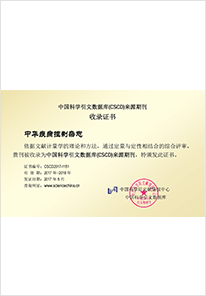2023 Vol. 27, No. 7
Display Method:
2023, 27(7): 745-750.
doi: 10.16462/j.cnki.zhjbkz.2023.07.001
Abstract:
2023, 27(7): 751-755.
doi: 10.16462/j.cnki.zhjbkz.2023.07.002
Abstract:
2023, 27(7): 756-762.
doi: 10.16462/j.cnki.zhjbkz.2023.07.003
Abstract:
2023, 27(7): 763-768.
doi: 10.16462/j.cnki.zhjbkz.2023.07.004
Abstract:
2023, 27(7): 769-775.
doi: 10.16462/j.cnki.zhjbkz.2023.07.005
Abstract:
2023, 27(7): 788-793.
doi: 10.16462/j.cnki.zhjbkz.2023.07.008
Abstract:
2023, 27(7): 800-806.
doi: 10.16462/j.cnki.zhjbkz.2023.07.010
Abstract:
2023, 27(7): 814-820.
doi: 10.16462/j.cnki.zhjbkz.2023.07.012
Abstract:
2023, 27(7): 821-826.
doi: 10.16462/j.cnki.zhjbkz.2023.07.013
Abstract:
2023, 27(7): 827-832.
doi: 10.16462/j.cnki.zhjbkz.2023.07.014
Abstract:
2023, 27(7): 833-837.
doi: 10.16462/j.cnki.zhjbkz.2023.07.015
Abstract:
2023, 27(7): 844-849.
doi: 10.16462/j.cnki.zhjbkz.2023.07.017
Abstract:
2023, 27(7): 850-853.
doi: 10.16462/j.cnki.zhjbkz.2023.07.018
Abstract:
2023, 27(7): 854-857.
doi: 10.16462/j.cnki.zhjbkz.2023.07.019
Abstract:
2023, 27(7): 858-863.
doi: 10.16462/j.cnki.zhjbkz.2023.07.020
Abstract:
2023, 27(7): 864-868.
doi: 10.16462/j.cnki.zhjbkz.2023.07.021
Abstract:


 Email alert
Email alert RSS
RSS Abstract
Abstract HTML
HTML PDF
PDF





